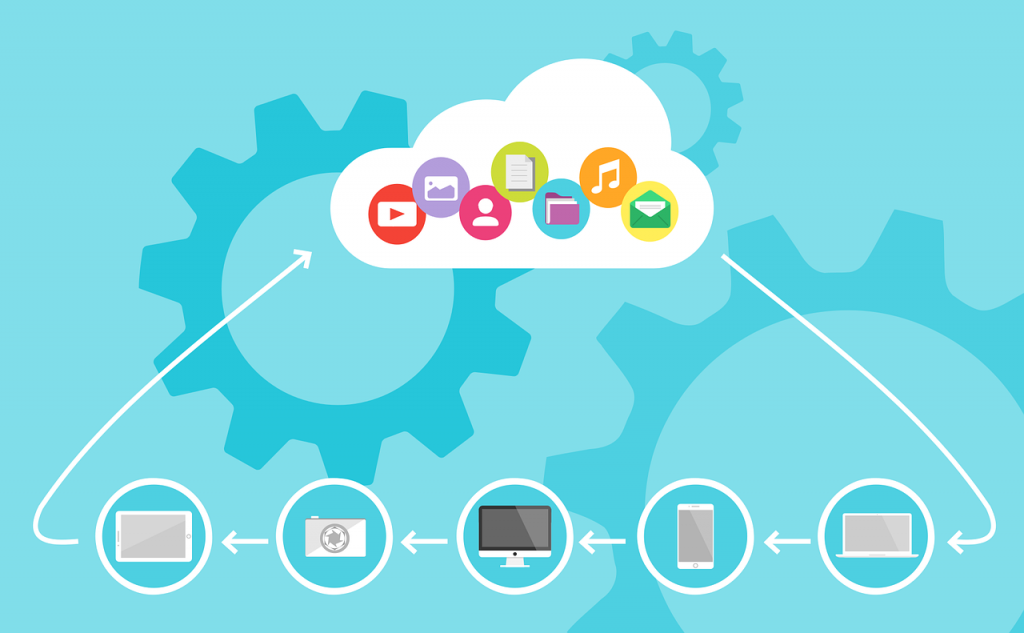Choosing a cloud computing deployment model and a reliable cloud provider can be a daunting task. Although AWS is the leading cloud platform today, it is intimidating to get started with. There are so many services, and the services are sometimes quite hard to use. In 2018, there are over 20 categories and 90-plus services that AWS has to offer (including several lesser-known ones). Google Cloud, on the other hand, has made it very easy to get started and to keep using the platform. Google offers strong value and has momentum in its favor. Whether you’re planning to get started with your business on the cloud or evaluating a change in your current cloud deployment strategy, there are good reasons why some of the features of Google Cloud are top-notch and easy to use at the same time.
Free Tier
The Google Cloud Platform Free Tier provides you with a massive opportunity to learn and use Google Cloud Platform. You can try many products for free, giving you the ability to test and develop with these products. Once you get started there is no turning back. The ease on every element of Google Cloud will get you up and running right away.
Free trial

The free trial is a one-time introduction to the platform for new customers where Google Cloud gives each account a $300 credit to spend over a period of one year. As you get started you’d be looking to migrate data and transition from your old infrastructure to Google Cloud. For this situation, migration tools make a big difference. Google Cloud Platform provides tools you can use to migrate files, data, and databases to Google Cloud Platform and in this way saves you time.
Better pricing
Unlike other cloud vendors that bill by the hour, Google bills in minute-level increments and you only pay for the compute time and resources you use. The best part is that Google gives you discounted prices for long-running workloads with zero upfront commitment. Use VMs or any service for a month and you get a discount. The “Low to No” pricing system makes it perfect for startups and for enterprise IT looking to cut costs. Instances are simply lower in cost on Google Cloud Platform. AWS has similar discounts but only if you commit to using an instance over the long term. So with AWS, you get discounts along with lock-in, which isn’t ideal. When it comes to Google Cloud Platform you basically get more for less, without any lock-in.
Tutorials to get you started
Google Cloud offers simple and step-by-step tutorials to learn and make the best of the platform. From quick-start guides and sample projects, you can find it all. Short tutorials are available to help you get started with different cloud platform products, services, and APIs. Tutorials that consist of 60-second videos help you learn everything from how to add APIs to a Cloud Platform project to how to create a bucket with the Google Cloud storage browser. You can get right into coding with the sample projects that demonstrate how to use popular and powerful Google Cloud Platform products and features. While basic tutorials on tools and libraries to enhance developer productivity on Google Cloud are also available, additional resources that include in-depth tutorials to combine the platform’s features and services for business solutions. The beauty of these tutorials is that many of them are as easy as point and click and require no typing or copy-and-pasting. This is what makes Google Cloud really stand out from the competition that does have tutorials, but ones that are more complex.
Fully managed infrastructure
Managed virtual machines are sort of a cross between IaaS and PaaS. You can program managed virtual machines to run on a specific operating system (OS) with certain ready-to-go applications that can be managed and changed without any hassle. The managed VM service checks the virtual machines and ensures that they are configured to the correct specifications, while necessary upgrades are conducted during the life of the VM. Managed VMs is a handy tool that gives Ops teams the ability to create virtual machine types that are customized to their specific use cases. This brings better coordination between teams and faster workflows.
On a similar note, Google App Engine takes a completely managed approach to not just VMs, but the entire infrastructure. It is Google Cloud’s PaaS solution, giving you hassle-free application delivery where you don’t need to manage any cloud instances. Google App Engine now supports microservices, SQL and NoSQL databases, load balancing, memcache, search, versioning, security scanning, and so much more.
CloudShell for simplicity
Google Cloud Shell provides you command-line access to your cloud resources directly from your browser. You can conveniently manage your projects and resources without the need to install the Google Cloud SDK or other tools for that matter. With Cloud Shell, multiple utilities are always available, up to date and fully authenticated when you need them. You can now enjoy access to a wide range of pre-configured developer tools like Go, PHP, Java, Ruby, etc. Google Cloud Shell also allows you to run your web applications inside the Cloud Shell instance and preview them from the browser. You can commit it back to your repo with the preconfigured Git and Mercurial clients. Google Cloud Shell provides you the ability to do more than just “Google Cloud.” It also offers 5GB of persistent disk storage that is mounted as your $HOME directory on the Cloud Shell instance, giving you a free playground to experiment in.
Deep focus on coding
Google Cloud computing puts coding first and everything else later. It encourages an efficient use of time by devoting most of the important cycles to code and lesser in configuring infrastructure at the end of the day. Keeping that in mind, you do not need to think about reliability, capacity or performance. You can conveniently go from prototypes to production and ultimately to planet-scale within no time. Google Cloud’s focus on coding has made creating, maintaining, and scaling cloud applications much easier than before.

Kubernetes
It is not hard to believe that Google is a big user of containers. Kubernetes is an open source container orchestration platform that Google has created for the benefit of the world of software delivery. Today, Kubernetes is at the center of the container revolution. Kubernetes is a management framework that helps schedule how containers are created and used. This gives you the ability to take care of applications automatically as Kubernetes manages containers across various virtual machines. Google Cloud provides upstream Kubernetes with industry-first features like auto upgrades for every version without downtime. Google Kubernetes Engine (GKE) is a leader in container operations and makes it easy to get started, not just with Google Cloud, but with containers too.
New at this? Fewer worries with Google Cloud
Google Cloud offers the services that you need and so much more. With top-of-the-line services, free trials, and budget-friendly prices, Google Cloud gives you the ability to explore, try, and choose the ideal services that you need, and puts the ball in your court. You can start cloud computing without worrying about complex user interfaces, dashboards or confusing manuals. Google Cloud takes you through every element, one step at a time and provides you with reliable services that you can trust. If you’re a newbie thinking about cloud computing, think Google Cloud.



